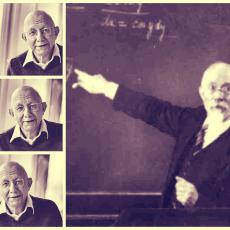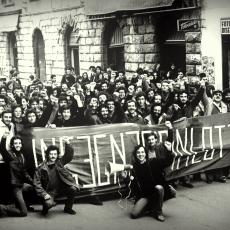Inside America's Largest Worker-Run Business
Can workplace democracy pave the way to better conditions in low-wage industries? For home care aides, the results of one 30-year experiment are mixed.
Fifteen years ago, Clara Calvo had just left her husband and her job. Both were abusive in their own ways. Her husband beat her, while her job at a beauty salon required long, unpredictable hours for little pay. Before that, she worked in a clothing factory in midtown Manhattan, earning a pittance for each hat she sewed, having immigrated from the Dominican Republic in 1995. Today, Calvo is able to support her three children as a single mother and sits on the board of company with over 2,000 employees that does $60 million in business per year.
But Calvo also works as home health care worker, making just $10 an hour. Her company,Cooperative Home Care Associates (CHCA), is not like most other companies. It is a worker cooperative, an ownership structure that is somewhat rare in the U.S. but much more common in Spain, Italy, and parts of Latin America. In a worker cooperative, every worker can own an equal share of the company (and its profits) and get a say in company decisions.
Today, worker co-ops are growing in popularity in the U.S., both for people ideologically drawn to an equitable workplace and as a means for economically disadvantaged people to control their own destiny. But among worker cooperatives, CHCA is rare in for its size (employing over 2,000 workers), its longevity (currently in its 30th year), and its success (it has been profitable in all but three of those years).
Unlike other corporations, CHCA's workers get a say in important decisions: Eight of its 12 board members are home health care aides, the company's front line workers. That board makes major decisions just like in other corporations, such as hiring the company's president. When Michael Elsas, CHCA's current president and a veteran of the home health care industry was interviewed by the board, he says he was shocked.
"That interview was horrifying for me," says Elsas. "After 25 years in the home care industry, it was the first time I was interviewed for a job by home care workers. I didn't know how to act."
"THEY'RE SEEN AS AN EXPENDABLE WORKFORCE."
Now in his 15th year at CHCA, Elsas has seen the industry from many sides. "Most agencies don't care about the workers in this industry," says Elsas. "Nobody cares about their benefits. Nobody cares about how much you train them. They're seen as an expendable workforce."
Home care workers are near the bottom of the medical hierarchy: beneath doctors, pharmacists, and nurses; beneath technicians, and beneath medical assistants. Because of the little training required—as few as 75 hours to be certified—others in the field tend to look down on them. And yet, these aides do some of the most intimate and physically demanding work imaginable. They care for our elderly and disabled, assisting with daily tasks that people can no longer perform for themselves, like cooking, dressing, and even bathing and using the bathroom.
A quarter of the workers who do this labor live in households below the federal poverty line and half only do the job part-time. These workers are overwhelmingly female (90%), people of color (56%), and lacking formal education (58% have at most a high school diploma or GED). Despite being health care workers, one in three did not have health insurance as of 2014.
For those who need home care and their loved ones, these should be troubling statistics. Workers who are treated poorly are prone to being abusive themselves, much like in nursing homes. Both industries have the ingredients for the toxic cocktail of abusive caregivers: lack of supervision, poor wages, and understaffing. Precise data is hard to come by because of the unsupervised nature of the work, but according to one study, 20% of disabled women reported being physically or sexually abused by their home care providers.
Despite the poor conditions and problems in the industry, personal care aides and home health aides are one of the nation's largest occupations and also the second and third-fastest growing occupations in the country, according to the Bureau of Labor Statistics. (And the fastest growing occupation, "industrial-organizational psychologists," only accounts for 1,600 people nationwide; whereas PCAs and HHAs total over 2 million workers.)
THE NOT-SO-MAGIC FORMULA OF TREATING WORKERS WITH RESPECT
The median annual wage for home care workers is just around $20,000 a year, making it a crucial workforce to target to improve conditions for the working poor. That was the mission when social entrepreneur Rick Surpin founded CHCA in the South Bronx 30 years ago.
"CHCA was founded on the premise that if you provide a quality job, you'll get quality care," says Elsas. "The other thing you would be doing is you would be stabilizing a workforce that historically has been very transient—going from one job to another."
For years, CHCA has offered wages slightly above the industry standard, which in New York was often the state minimum wage. Yet workers at CHCA don't necessarily earn much more than their full-time counterparts at other agencies. The biggest difference is that more at CHCA actually do full-time work: After three years at CHCA, it guarantees workers full-time pay, whereas many agencies operate using contract workers. In addition, all CHCA workers get health care benefits—which, nationwide, is not the case for about a quarter of these workers. Finally, as worker-owners, CHCA members receive a share of the profits in the form of dividends. The president gets the same dividend as the newest home care worker, which usually averages around $200 to $300 a year.
The stability of the jobs CHCA offers is born out in its retention rate. The home care industry has an annual turnover rate of 40%—meaning that nearly half of home care workers leave their job or are fired every year. By contrast, CHCA's turnover rate is only 15%.
The payoff for that comes in the respect workers have for their clients. Every worker I spoke with at CHCA took pride in their work and said they love working with clients and helping them live fulfilling lives. It's striking that a job that requires so much empathy and has such an immediate impact on people's lives can be an almost minimum wage job.
"It's very rewarding to help clients have a life like they had before they were disabled," says Calvo, who has worked with some of her clients for over 10 years. At other home care agencies, that kind of consistency is unheard of.
Another CHCA worker, Diane Holmes, says that her favorite part of her job is coming into contact with different people, getting to know them, and being able to care for them.
"The way you touch somebody's life is really powerful," she says. "There's something very minute in their reaction, but you can honestly tell sometimes that what you do for them makes a big difference in their lives."
Wages, reliable work, and flexible scheduling so that women—many of them single mothers like Calvo—can balance the demands of parenting and work are all pieces of what makes CHCA so sharply different from other employment these women might otherwise take. That, in turn, is why workers tend to say in their jobs at CHCA and are more emotionally invested in their patients.
CHANGING AN INDUSTRY (AS MUCH AS POSSIBLE)
CHCA is certainly a more humane company than most of the others in the industry, especially in an impoverished area like the Bronx. Yet it also clearly has its limitations.
In a sense, CHCA is a study in scale for the co-op movement in the United States, especially in traditionally low-wage occupations. Is it possible to remain democratic while employing thousands, rather than dozens, of workers? Elsas and CHCA leadership think so. But the limiting factor might be the wages of the work and the need to change the broader industry as a whole first. When people are just barely making ends meet, they might not have much time to engage in workplace democracy. Elsas readily admits that voter participation is low in the elections for the eight worker board members. And of the 2,000 workers employed by CHCA, only half are actually worker-owners. This is despite the fact that CHCA makes it extremely easy to buy a $1,000 share of the company: Workers have to put up just $50 to get ownership privileges; CHCA provides an interest-free loan for the remaining $950 and then deducts $3.50 a week until that loan is paid off.
CHCA is faced with outside constraints on how much it can pay its workers. Unlike most industries, prices for home care service are effectively set by the government. Through Medicaid, Medicare, and other programs, the government pays for 73% of billings in the $61 billion home care services industry. Private insurers pay another 15%.
That means that for-profit home care agencies cannot simply raise the costs of their services and pass that money onto rank and file employees—even for worker co-ops like CHCA that would be inclined to if they could. With most of the board made of rank and file workers, CHCA limits its administrative and executive salaries to reasonable, but still competitive levels. Elsas makes $201,000 a year, about nine times CHCA’s lowest paid worker, whereas the average salary for the CEO of a home care agency in New York state is $500,000. Meanwhile, the CEOs of mega-corporations like Walmart and Time Warner Cable make over 800 times the salaries of their average workers.
"To me, the most important metric is how much of a dollar that comes into the company goes to the workers," says Elsas. "Right now, it's 90 cents on the dollar."
To further improve workers' lives, CHCA has turned to a different tactic. A nonprofit arm founded by CHCA, the Paraprofessional Healthcare Institute, was part of a movement that successfully lobbied to increase the state minimum wage. Today, a new law in New York guarantees home health care workers $10 an hour.
In addition to making pay more equitable, CHCA also has a policy of internally promoting its own workers to administrative roles. Currently, 40 of the 100 administrative staff are former health care workers. Current workers say that the policy makes their supervisors much more approachable and understanding of the nature of the work and problems that can arise on the job. That kind of sensibility is a direct outgrowth of CHCA being a worker-owned business.
"We always feel that a career ladder is an important component of the company," says Elsas. "But we also believe very strongly in raising the floor."
The latter point may prove to be the most difficult because of the nature of the work and the market.
Based in the Bronx, CHCA's workforce pool likely relies more heavily on government assistance than the national average, even among other potential home care workers. CHCA's Executive Vice President Adira Powell says that 95% of CHCA trainees live below the federal poverty line when they start working at CHCA. The job is able to bring about half of them above the line, though this statistic is an approximation due to laws barring employers from collecting certain data about employees. But the rest still languish at income levels requiring government assistance, despite CHCA's best efforts.
"The stark reality is that even with the work we do to raise the floor when it comes to wages, our industry is one than has consistently and systematically kept our workers—predominantly women of color—in poverty," says Powell. "So we continue to fight."






Comments
Post new comment